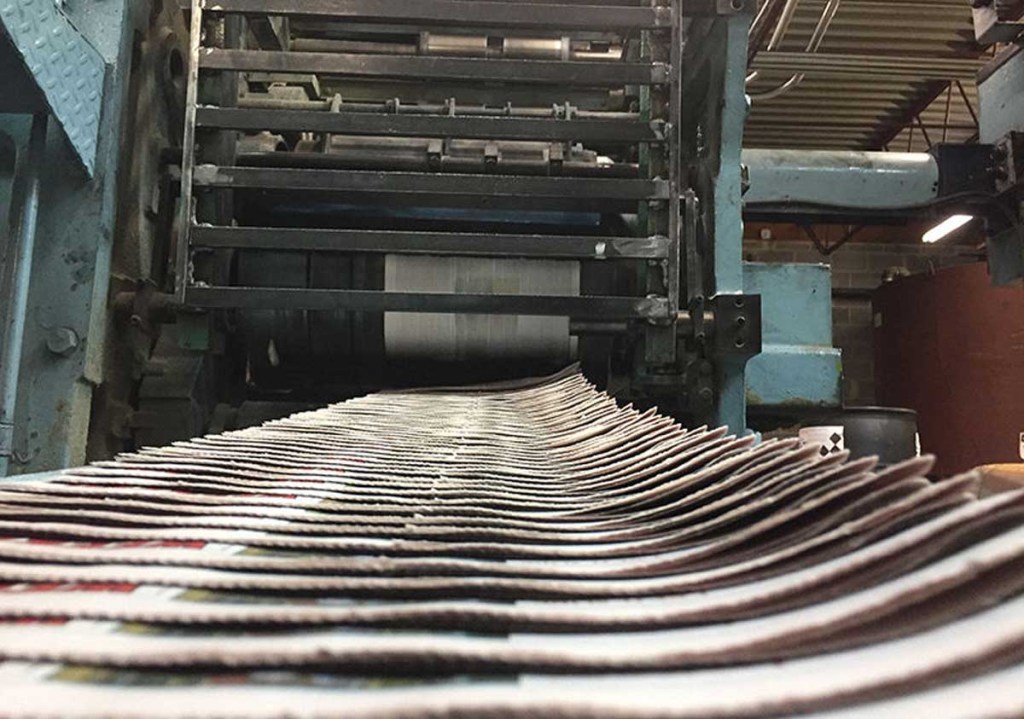(Our view) Newsprint tariff must go away
Published 5:10 am Saturday, April 7, 2018

- Newspapers flow off The Cullman Times press.
The American newspaper industry is feeling the bite of an ill-advised tariff on Canadian newsprint.
The threat to newspapers is the work of a single newsprint mill in the Pacific Northwest, North Pacific Paper Company (NORPAC). In August 2017, NORPAC petitioned the U.S. Department of Commerce to begin applying tariffs to newsprint imported from Canada. NORPAC claimed the imported paper was harming the U.S. newsprint industry.
NORPAC’s assumption is wrong, and this one company’s act is not in the best interest of the U.S. paper industry or the millions of readers of newspapers across the country, including those who read this newspaper.
The tariffs are being enforced at the Canadian border at the rates up to 30 percent, according to the organization STOPP, or Stop Tariffs on Printers & Publishers. STOPP notes the impact of these tariffs on newspapers, paper produces, book publishers and others has the potential to be devastating to entire industries.
Although the newsprint The Times uses is produced in the Southeast, the company that sells the newsprint also distributes Canadian newsprint from some of its other mills across the country. Therefore, the tariffs are being passed along to all newspapers in increased production and delivery costs. For the record, outside of personnel, newsprint is the second highest expense of newspapers.
The hasty action by the Department of Commerce on imported newsprint has raised the price by as much as 32 percent. Newspapers have already experienced price increases and a disruption in supply.
If these tariffs are made permanent, it could lead some smaller community newspapers to eliminate their print product, or shut their doors. That statement alone should concern anyone who values the fact that a local newspaper keeps a community informed and serves as a watchdog of government and other aspects important to all residents.
Through the years, the demand for newsprint has declined dramatically as online audience grows. While the downward trend of print readership is well documented, there remains a significant aspect of our audience that prefers to hold a newspaper and read by the traditional method.
Since 2000, many U.S. mills have closed or converted to producing other types of paper products to remain viable. Newsprint from Canada has been affordable and readily available. But the tariff-happy administration in Washington is quickly undoing the affordable relationship that has helped many newspapers survive and serve their communities.
The tariff is short-sighted because it is not capable of restarting U.S. mills or shifting more business their way. The demand for newsprint is not going to surge; trends point to a continuing decline because of changing readership to digital platforms.
Any contention the tariff is protecting jobs in the U.S. is false. Instead it will only push more people out of work at newspapers that are battling this staggering tariff levied against a country – Canada – that’s been a faithful ally of the U.S. and a reliable trade partner.
“A decision by the federal government to impose tariffs on our paper supply would imperil our news-gathering missions and put jobs in jeopardy at our newspapers and at many other organizations and companies in our communities that rely upon a healthy newspaper,” said Susan Rowell, president of the National Newspaper Association.
STOPP is working with members of Congress and others to kill this tariff, and we encourage those who want to continue reading a printed newspaper to contact Sen. Richard Shelby, Sen. Doug Jones and Rep. Robert Aderholt and voice your concern.
We join others in the news industry and in communities across the U.S. in calling for an end to the unnecessary newsprint tariff.





